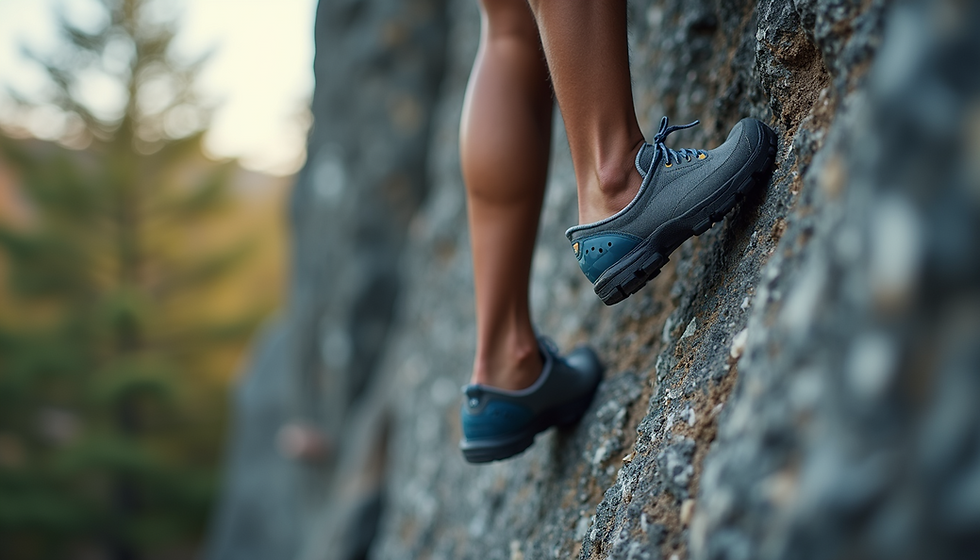How to Start Bouldering Outside
- info400279
- Dec 23, 2023
- 3 min read
Bouldering
Bouldering is the most accessible outdoor discipline to start, however there are still some new skills to learn in order to keep things safe and fun. In this post we will look at what equipment you will need, how skills differ from climbing indoors and how to find the best areas outdoors to start.

Equipment
For someone that has been bouldering indoors already, it’s pretty likely you already own shoes, a chalk bag and possibly a brush too.
Whilst not 100% essential (or so some older climbers would tell you) a bouldering mat is a great investment that will open up loads of great climbing. A basic mat can be bought new for £100+ with second hand mats being available for much less (and sometimes for free!), it is also possible in some areas to rent a pad. When selecting a mat there are two main types with the main difference being the folding method, one is called a taco where the foam itself folds and the other is a briefcase style, where the fabric acts as a hinge. There isn't really too much difference in use, so I wouldn't worry about it too much. The main things to look out for are foam thickness (10cm is ideal for a first pad) and area covered (1m2+ minimum for a single pad is best). A final note, check the mat you are buying fits in your car!
Knowing where to find boulders outdoors is the first step and there are a few options for finding suitable areas to go to. The easiest way is to buy a guidebook to the area, this will have information about where the boulders are, local access information and the climbs on the boulders themselves. The are other methods such as using online databases or apps like Rockfax.
Landings -
Indoor bouldering walls have huge mats to land on, but even indoors it’s still a good idea to downclimb as much as possible. For climbing outdoor boulders it’s important to learn where to position the mat so that it protects the climber as much as possible, this might mean using lots of pads to make a large landing area, or moving one or two mats as the person is climbing. Things to avoid are having gaps between pads and if you are stacking pads being careful to have large “steps” which can cause rolled ankles. Smaller pads are good for filling holes, with larger pads over the top to give a flat landing area. When moving pads between areas make sure you carry rather than drag pads to avoid unnecessary erosion.
Sit Starts and Top Outs-
Whilst there are occasionally sit starts for indoor boulder problems, top outs are almost unheard of and are something to be aware of when making the change to climbing outdoors. It's definitely worth starting out by dropping a few grades and practicing the mantle techniques which are usually required to finish a boulder problem. Sometimes if I'm not sure what the top is like I'll climb up the boulder an easier way and check out the holds from above, this is also good because it means you know how to get down after a sucesful ascent!
Spotting -
Spotting is really important outdoors as landings are often not as good as indoors with the potential for landing on rocks, other boulders or rolling down slopes being a definite possibility. When spotting the aim is to control the landing to protect their head and neck from a nasty fall, rather than to catch the climber. The easiest way to do this is to use outstretched arms to “guide” the climber's hips. If the climber is starting to get really high, it can be better to leave them to it rather than risk being landed on. Make sure you have a discussed this before the climber starts though as they might be a bit unhappy to see you disappearing!
As with padding out the landings above, it's also a good idea to make sure the landing area is free from any bits and pieces, such as chalk buckets, cameras, lunch boxes, crag dogs or resting boulderers!
Cleaning Up -
As mentioned in the previous post, it's essential to clean up when you are finished climbing. Bouldering can have a very high impact on the environment because of its concentrated nature, so it's good to limit the possibility of changing the crag as much as possible. Taking everything home at the end of the day (including apple cores, banana peel etc…) , cleaning any chalk marks off the rock and being aware of the causes of erosion and mitigating them will help leave the crag in a great condition for other users.

Have fun and happy landings!



Comments